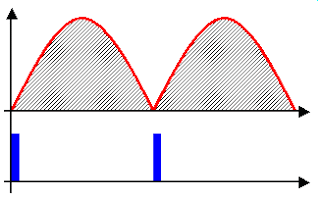AC Power Control with Thyristor: Pulse Skipping using triac with PIC16F877A

Pulse Skipping Modulation Green - Input AC Yellow - Output AC after Pulse Skipping Modulation Pink - Gate Drive Signal Pulse skipping modulation (PSM) or cycle control or burst fire is a method of power control where whole cycles of voltage are applied to the load. Here I’ll talk about PSM involving a thyristor, specifically a triac. The triac connects the AC supply to the load for a given number of cycles and then disconnects the AC supply for another given number of cycles. It has of course become quite obvious from the title that the purpose of PSM is to control or limit power to the load. We know that the thyristor is a latching device – when the thyristor is turned on by a gating signal and the current is higher than the holding current and the latching current, the thyristor stays on, until the current through it becomes sufficiently low (very close to zero). The thyristor turns off when current through it becomes zero, as happens at the AC mains zero crossing. This is the natura...
